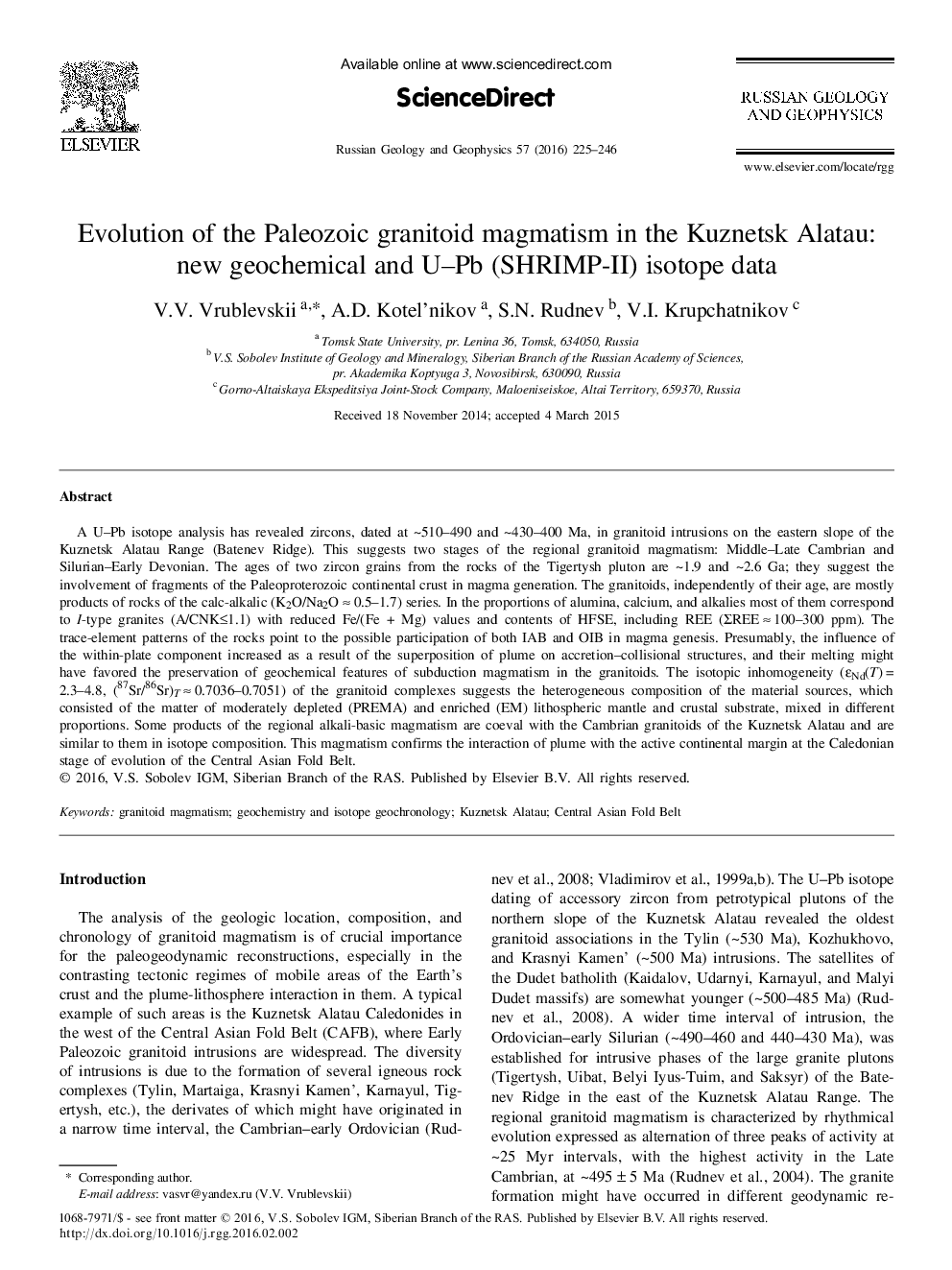| Article ID | Journal | Published Year | Pages | File Type |
|---|---|---|---|---|
| 4738411 | Russian Geology and Geophysics | 2016 | 22 Pages |
A U-Pb isotope analysis has revealed zircons, dated at ~ 510-490 and ~ 430-400 Ma, in granitoid intrusions on the eastern slope of the Kuznetsk Alatau Range (Batenev Ridge). This suggests two stages of the regional granitoid magmatism: Middle-Late Cambrian and Silurian-Early Devonian. The ages of two zircon grains from the rocks of the Tigertysh pluton are ~ 1.9 and ~ 2.6 Ga; they suggest the involvement of fragments of the Paleoproterozoic continental crust in magma generation. The granitoids, independently of their age, are mostly products of rocks of the calc-alkalic (K2O/Na2O ≈ 0.5-1.7) series. In the proportions of alumina, calcium, and alkalies most of them correspond to I-type granites (A/CNK≤1.1) with reduced Fe/(Fe + Mg) values and contents of HFSE, including REE (ΣREE ≈ 100–300 ppm). The trace-element patterns of the rocks point to the possible participation of both IAB and OIB in magma genesis. Presumably, the influence of the within-plate component increased as a result of the superposition of plume on accretion-collisional structures, and their melting might have favored the preservation of geochemical features of subduction magmatism in the granitoids. The isotopic inhomogeneity (εNd(T) = 2.3-4.8, (87Sr/86Sr)T ≈ 0.7036-0.7051) of the granitoid complexes suggests the heterogeneous composition of the material sources, which consisted of the matter of moderately depleted (PREMA) and enriched (EM) lithospheric mantle and crustal substrate, mixed in different proportions. Some products of the regional alkali-basic magmatism are coeval with the Cambrian granitoids of the Kuznetsk Alatau and are similar to them in isotope composition. This magmatism confirms the interaction of plume with the active continental margin at the Caledonian stage of evolution of the Central Asian Fold Belt.
